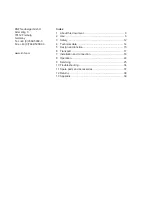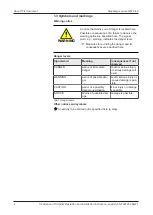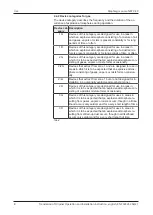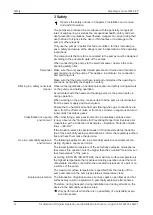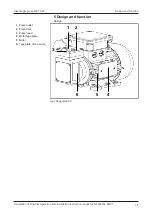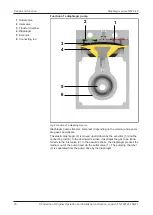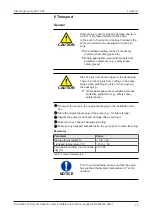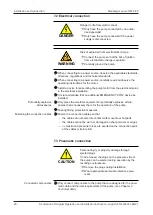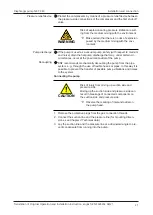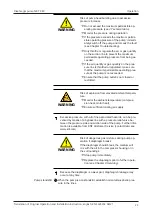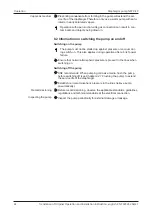
Diaphragm pump N87.9 EX
Use
Translation of Original Operation and Installation Instruction, english, KNF 323252 04/21
9
2.4.3 Explosion groups
Combustible gases and vapors are classified according to explosion
groups(I, IIA, IIB and IIC) and temperature classes. The following table
shows the classification of the most common combustible gases and va-
pors.
T1
T2
T3
T4
T5 T6
I
Methane
–
–
–
–
–
IIA Acetone
Ethane
Ethyl ac-
etate
Ammonia
Ethyl chlo-
ride
Benzene
Acetic acid
Carbon
monoxide
Methane
Methanol
Methyl chlo-
ride
Naphthalene
Phenol
Propane
Toluene
i-amyl ac-
etate
n-butane
n-butyl alco-
hol
Cyclohex-
anone
1,2-
dichloroetha
ne
Acetic anhy-
dride
Gasoline
Diesel fuel
Jet fuel
Heating oils
n-hexane
Acetalde-
hyde
–
–
IIB Town gas
Ethylene
Ethyl alcohol
Hydrogen
sulfide
Ethyl ether
–
–
IIC Hydrogen
Acetylene
–
–
–
Carbon
disulfide
Tab.5
The classification of gases and vapors into groups with respect to explo-
sion group and temperature class applies for the transferred medium as
well as for the pump surroundings.
Transferred medium The pump may only be used to transfer gases and vapors that belong to
the respective explosion group and corresponding temperature class (or
below) (see designation on the type plate) or that are not explosive and
combustible.
Environment of the pump The pump may only be operated in an environment that contains an at-
mosphere that belongs to the respective explosion group and correspond-
ing temperature class (or below) (see designation on the type plate) or that
is not explosive and not combustible.


